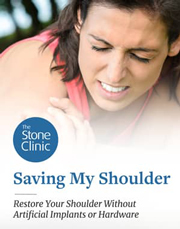Shohei Ohtani and the Subluxating Shoulder
Loose shoulders have some advantages. When injured, though, the decisions are tricky. Here are the concerns:

Image source: Shutterstock
Loose shoulders, and generally hyperflexible tissues, are often based on the collagen structure of a person’s body. Collagen makes up most of our tissues and 30% of our bodies’ protein. Arrayed in its fibers are charged, sugar-based cross-links——which control the elasticity of the tissue. The amount and the variability of these cross-links determines how easily the fibers slide on each other, or how much the tissue stretches. People vary from those with tight tissues and tight joints to hyper-flexible ballet dancers, or even circus performers who can place their feet behind their heads—due mostly to training and collagen elasticity.
The shoulder joint is a ball-and-socket joint. It has a primary ligament and gasket-like tissue called a labrum holding it in place. In most people, the shoulder cannot fully dislocate from the joint without tearing that gasket. Once torn, it rarely heals well and often requires surgical repair.
However, the shoulder can be subluxated (moved partially in and out of the joint), usually without tearing the labrum. Loose-jointed people can often subluxate their shoulder joint (and other joints) voluntarily without causing harm. When a traumatic subluxation occurs—such as Shohei Ohtani’s slide into second base during Game Two of the World Series with his outstretched back arm taking the landing forces—the tissues can be bruised (leading to a sore shoulder), or torn (requiring repair). An MRI can show which injury occurred. The tricky part comes when we must repair a loose-jointed person’s torn tissues. If we make them too tight, they can’t perform (e.g. pitch or bat) naturally. Too loose, the tissue fails to heal properly.
People with tight tissues usually require a significant amount of force to subluxate their joints. To get their joints out of place, tight-jointed people must actually tear their tissues.
Fortunately, in what I call the “anabolic era” of sports medicine, we have the tools to stimulate healing with injections of growth factors and cells. Injuries can be bathed in stimulating factors to dramatically accelerate healing. At the pro sports level, and for all athletes who can’t afford the downtime of injury and slow healing, the hope is that we will continue to advance the research we and others are doing to find the best tissue stimulants for healing and longevity. This is the hot field of our science, and field of dreams for all who play.

